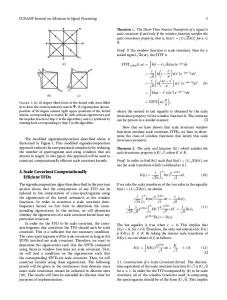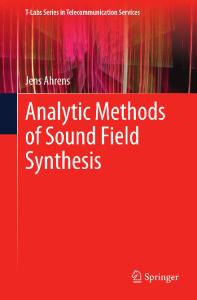Sound Synthesis of the Harpsichord Using a Computationally Efficient Physical Model
- PDF / 1,598,455 Bytes
- 15 Pages / 600 x 792 pts Page_size
- 41 Downloads / 232 Views
Sound Synthesis of the Harpsichord Using a Computationally Efficient Physical Model ¨ ¨ Vesa Valim aki Laboratory of Acoustics and Audio Signal Processing, Helsinki University of Technology, P.O. Box 3000, 02015 Espoo, Finland Email: [email protected]
Henri Penttinen Laboratory of Acoustics and Audio Signal Processing, Helsinki University of Technology, P.O. Box 3000, 02015 Espoo, Finland Email: [email protected]
Jonte Knif Sibelius Academy, Centre for Music and Technology, P.O. Box 86, 00251 Helsinki, Finland Email: [email protected]
Mikael Laurson Sibelius Academy, Centre for Music and Technology, P.O. Box 86, 00251 Helsinki, Finland Email: [email protected]
Cumhur Erkut Laboratory of Acoustics and Audio Signal Processing, Helsinki University of Technology, P.O. Box 3000, 02015 Espoo, Finland Email: [email protected] Received 24 June 2003; Revised 28 November 2003 A sound synthesis algorithm for the harpsichord has been developed by applying the principles of digital waveguide modeling. A modification to the loss filter of the string model is introduced that allows more flexible control of decay rates of partials than is possible with a one-pole digital filter, which is a usual choice for the loss filter. A version of the commuted waveguide synthesis approach is used, where each tone is generated with a parallel combination of the string model and a second-order resonator that are excited with a common excitation signal. The second-order resonator, previously proposed for this purpose, approximately simulates the beating effect appearing in many harpsichord tones. The characteristic key-release thump terminating harpsichord tones is reproduced by triggering a sample that has been extracted from a recording. A digital filter model for the soundboard has been designed based on recorded bridge impulse responses of the harpsichord. The output of the string models is injected in the soundboard filter that imitates the reverberant nature of the soundbox and, particularly, the ringing of the short parts of the strings behind the bridge. Keywords and phrases: acoustic signal processing, digital filter design, electronic music, musical acoustics.
1.
INTRODUCTION
Sound synthesis is particularly interesting for acoustic keyboard instruments, since they are usually expensive and large and may require amplification during performances. Electronic versions of these instruments benefit from the fact that keyboard controllers using MIDI are commonly available and fit for use. Digital pianos imitating the timbre and
features of grand pianos are among the most popular electronic instruments. Our current work focuses on the imitation of the harpsichord, which is expensive, relatively rare, but is still commonly used in music from the Renaissance and the baroque era. Figure 1 shows the instrument used in this study. It is a two-manual harpsichord that contains three individual sets of strings, two bridges, and has a large soundboard.
Sound Synthesis of the Harpsichord Using a Physical Model
Figure 1: The harpsichord used
Data Loading...











